Richeng Jin
Byzantine Outside, Curious Inside: Reconstructing Data Through Malicious Updates
Jun 13, 2025Abstract:Federated learning (FL) enables decentralized machine learning without sharing raw data, allowing multiple clients to collaboratively learn a global model. However, studies reveal that privacy leakage is possible under commonly adopted FL protocols. In particular, a server with access to client gradients can synthesize data resembling the clients' training data. In this paper, we introduce a novel threat model in FL, named the maliciously curious client, where a client manipulates its own gradients with the goal of inferring private data from peers. This attacker uniquely exploits the strength of a Byzantine adversary, traditionally aimed at undermining model robustness, and repurposes it to facilitate data reconstruction attack. We begin by formally defining this novel client-side threat model and providing a theoretical analysis that demonstrates its ability to achieve significant reconstruction success during FL training. To demonstrate its practical impact, we further develop a reconstruction algorithm that combines gradient inversion with malicious update strategies. Our analysis and experimental results reveal a critical blind spot in FL defenses: both server-side robust aggregation and client-side privacy mechanisms may fail against our proposed attack. Surprisingly, standard server- and client-side defenses designed to enhance robustness or privacy may unintentionally amplify data leakage. Compared to the baseline approach, a mistakenly used defense may instead improve the reconstructed image quality by 10-15%.
Distribution-Aware Mobility-Assisted Decentralized Federated Learning
May 24, 2025Abstract:Decentralized federated learning (DFL) has attracted significant attention due to its scalability and independence from a central server. In practice, some participating clients can be mobile, yet the impact of user mobility on DFL performance remains largely unexplored, despite its potential to facilitate communication and model convergence. In this work, we demonstrate that introducing a small fraction of mobile clients, even with random movement, can significantly improve the accuracy of DFL by facilitating information flow. To further enhance performance, we propose novel distribution-aware mobility patterns, where mobile clients strategically navigate the network, leveraging knowledge of data distributions and static client locations. The proposed moving strategies mitigate the impact of data heterogeneity and boost learning convergence. Extensive experiments validate the effectiveness of induced mobility in DFL and demonstrate the superiority of our proposed mobility patterns over random movement.
Wireless Large AI Model: Shaping the AI-Native Future of 6G and Beyond
Apr 20, 2025Abstract:The emergence of sixth-generation and beyond communication systems is expected to fundamentally transform digital experiences through introducing unparalleled levels of intelligence, efficiency, and connectivity. A promising technology poised to enable this revolutionary vision is the wireless large AI model (WLAM), characterized by its exceptional capabilities in data processing, inference, and decision-making. In light of these remarkable capabilities, this paper provides a comprehensive survey of WLAM, elucidating its fundamental principles, diverse applications, critical challenges, and future research opportunities. We begin by introducing the background of WLAM and analyzing the key synergies with wireless networks, emphasizing the mutual benefits. Subsequently, we explore the foundational characteristics of WLAM, delving into their unique relevance in wireless environments. Then, the role of WLAM in optimizing wireless communication systems across various use cases and the reciprocal benefits are systematically investigated. Furthermore, we discuss the integration of WLAM with emerging technologies, highlighting their potential to enable transformative capabilities and breakthroughs in wireless communication. Finally, we thoroughly examine the high-level challenges hindering the practical implementation of WLAM and discuss pivotal future research directions.
Analogical Learning for Cross-Scenario Generalization: Framework and Application to Intelligent Localization
Apr 09, 2025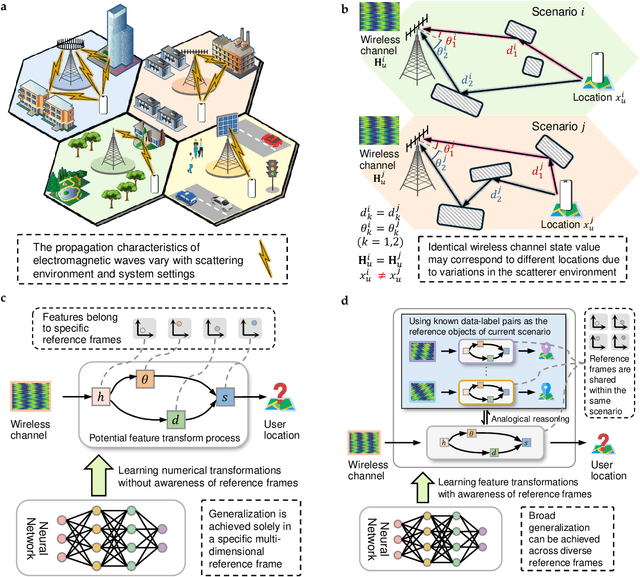
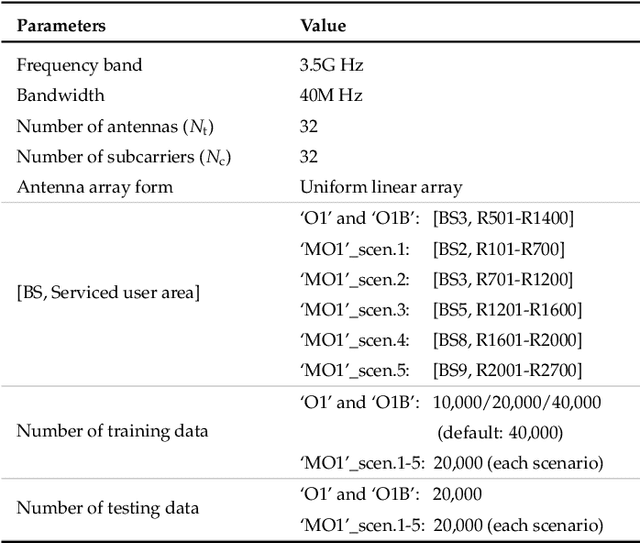
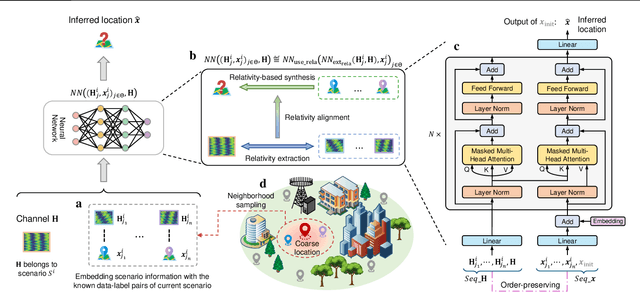
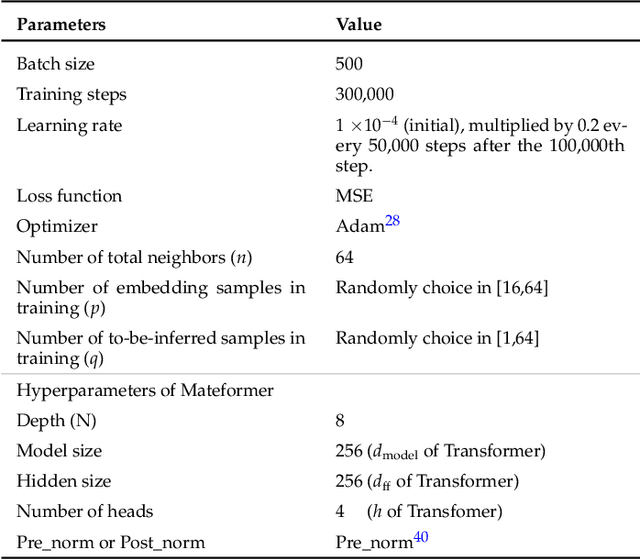
Abstract:Existing learning models often exhibit poor generalization when deployed across diverse scenarios. It is mainly due to that the underlying reference frame of the data varies with the deployment environment and settings. However, despite the data of each scenario has its distinct reference frame, its generation generally follows the same underlying physical rule. Based on these findings, this article proposes a brand-new universal deep learning framework named analogical learning (AL), which provides a highly efficient way to implicitly retrieve the reference frame information associated with a scenario and then to make accurate prediction by relative analogy across scenarios. Specifically, an elegant bipartite neural network architecture called Mateformer is designed, the first part of which calculates the relativity within multiple feature spaces between the input data and a small amount of embedded data from the current scenario, while the second part uses these relativity to guide the nonlinear analogy. We apply AL to the typical multi-scenario learning problem of intelligent wireless localization in cellular networks. Extensive experiments show that AL achieves state-of-the-art accuracy, stable transferability and robust adaptation to new scenarios without any tuning, and outperforming conventional methods with a precision improvement of nearly two orders of magnitude. All data and code are available at https://github.com/ziruichen-research/ALLoc.
GSBA$^K$: $top$-$K$ Geometric Score-based Black-box Attack
Mar 18, 2025Abstract:Existing score-based adversarial attacks mainly focus on crafting $top$-1 adversarial examples against classifiers with single-label classification. Their attack success rate and query efficiency are often less than satisfactory, particularly under small perturbation requirements; moreover, the vulnerability of classifiers with multi-label learning is yet to be studied. In this paper, we propose a comprehensive surrogate free score-based attack, named \b geometric \b score-based \b black-box \b attack (GSBA$^K$), to craft adversarial examples in an aggressive $top$-$K$ setting for both untargeted and targeted attacks, where the goal is to change the $top$-$K$ predictions of the target classifier. We introduce novel gradient-based methods to find a good initial boundary point to attack. Our iterative method employs novel gradient estimation techniques, particularly effective in $top$-$K$ setting, on the decision boundary to effectively exploit the geometry of the decision boundary. Additionally, GSBA$^K$ can be used to attack against classifiers with $top$-$K$ multi-label learning. Extensive experimental results on ImageNet and PASCAL VOC datasets validate the effectiveness of GSBA$^K$ in crafting $top$-$K$ adversarial examples.
GSBAK$^K$: $top$-$K$ Geometric Score-based Black-box Attack
Mar 17, 2025Abstract:Existing score-based adversarial attacks mainly focus on crafting $top$-1 adversarial examples against classifiers with single-label classification. Their attack success rate and query efficiency are often less than satisfactory, particularly under small perturbation requirements; moreover, the vulnerability of classifiers with multi-label learning is yet to be studied. In this paper, we propose a comprehensive surrogate free score-based attack, named \b geometric \b score-based \b black-box \b attack (GSBAK$^K$), to craft adversarial examples in an aggressive $top$-$K$ setting for both untargeted and targeted attacks, where the goal is to change the $top$-$K$ predictions of the target classifier. We introduce novel gradient-based methods to find a good initial boundary point to attack. Our iterative method employs novel gradient estimation techniques, particularly effective in $top$-$K$ setting, on the decision boundary to effectively exploit the geometry of the decision boundary. Additionally, GSBAK$^K$ can be used to attack against classifiers with $top$-$K$ multi-label learning. Extensive experimental results on ImageNet and PASCAL VOC datasets validate the effectiveness of GSBAK$^K$ in crafting $top$-$K$ adversarial examples.
Semantics-Guided Diffusion for Deep Joint Source-Channel Coding in Wireless Image Transmission
Jan 02, 2025Abstract:Joint source-channel coding (JSCC) offers a promising avenue for enhancing transmission efficiency by jointly incorporating source and channel statistics into the system design. A key advancement in this area is the deep joint source and channel coding (DeepJSCC) technique that designs a direct mapping of input signals to channel symbols parameterized by a neural network, which can be trained for arbitrary channel models and semantic quality metrics. This paper advances the DeepJSCC framework toward a semantics-aligned, high-fidelity transmission approach, called semantics-guided diffusion DeepJSCC (SGD-JSCC). Existing schemes that integrate diffusion models (DMs) with JSCC face challenges in transforming random generation into accurate reconstruction and adapting to varying channel conditions. SGD-JSCC incorporates two key innovations: (1) utilizing some inherent information that contributes to the semantics of an image, such as text description or edge map, to guide the diffusion denoising process; and (2) enabling seamless adaptability to varying channel conditions with the help of a semantics-guided DM for channel denoising. The DM is guided by diverse semantic information and integrates seamlessly with DeepJSCC. In a slow fading channel, SGD-JSCC dynamically adapts to the instantaneous signal-to-noise ratio (SNR) directly estimated from the channel output, thereby eliminating the need for additional pilot transmissions for channel estimation. In a fast fading channel, we introduce a training-free denoising strategy, allowing SGD-JSCC to effectively adjust to fluctuations in channel gains. Numerical results demonstrate that, guided by semantic information and leveraging the powerful DM, our method outperforms existing DeepJSCC schemes, delivering satisfactory reconstruction performance even at extremely poor channel conditions.
Multi-Sources Fusion Learning for Multi-Points NLOS Localization in OFDM System
Sep 04, 2024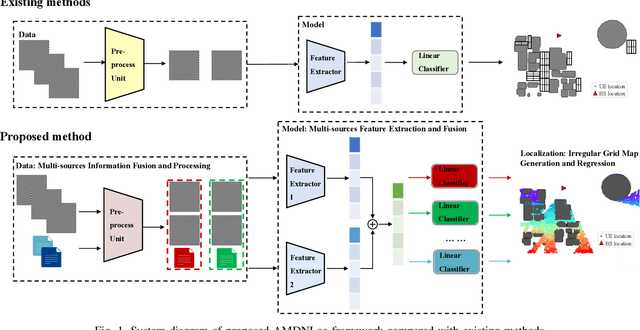
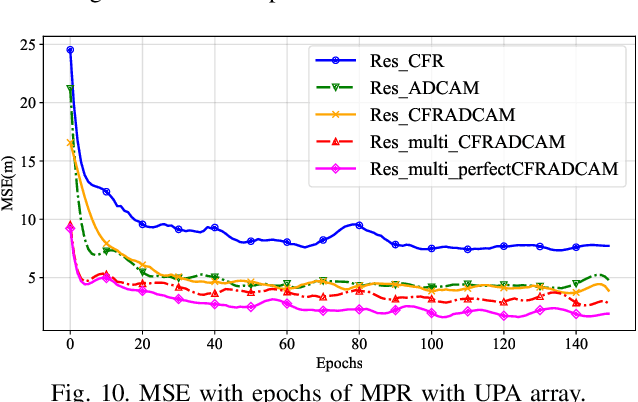
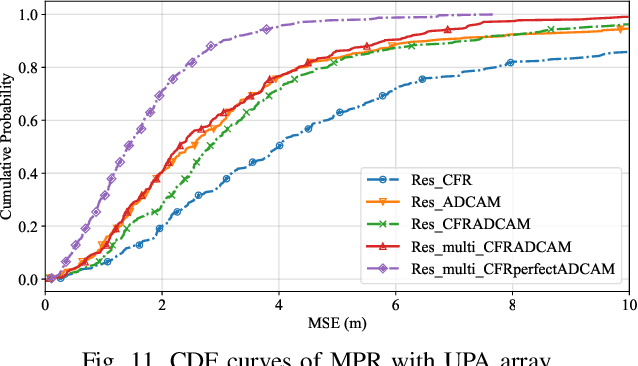
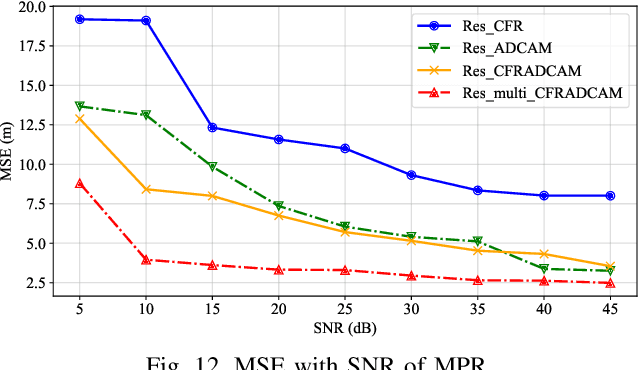
Abstract:Accurate localization of mobile terminals is a pivotal aspect of integrated sensing and communication systems. Traditional fingerprint-based localization methods, which infer coordinates from channel information within pre-set rectangular areas, often face challenges due to the heterogeneous distribution of fingerprints inherent in non-line-of-sight (NLOS) scenarios, particularly within orthogonal frequency division multiplexing systems. To overcome this limitation, we develop a novel multi-sources information fusion learning framework referred to as the Autosync Multi-Domains NLOS Localization (AMDNLoc). Specifically, AMDNLoc employs a two-stage matched filter fused with a target tracking algorithm and iterative centroid-based clustering to automatically and irregularly segment NLOS regions, ensuring uniform distribution within channel state information across frequency, power, and time-delay domains. Additionally, the framework utilizes a segment-specific linear classifier array, coupled with deep residual network-based feature extraction and fusion, to establish the correlation function between fingerprint features and coordinates within these regions. Simulation results reveal that AMDNLoc achieves an impressive NLOS localization accuracy of 1.46 meters on typical wireless artificial intelligence research datasets and demonstrates significant improvements in interpretability, adaptability, and scalability.
Integrated Sensing and Communication in IRS-assisted High-Mobility Systems: Design, Analysis and Optimization
Jul 31, 2024Abstract:In this paper, we investigate integrated sensing and communication (ISAC) in high-mobility systems with the aid of an intelligent reflecting surface (IRS). To exploit the benefits of Delay-Doppler (DD) spread caused by high mobility, orthogonal time frequency space (OTFS)-based frame structure and transmission framework are proposed. {In such a framework,} we first design a low-complexity ratio-based sensing algorithm for estimating the velocity of mobile user. Then, we analyze the performance of sensing and communication in terms of achievable mean square error (MSE) and achievable rate, respectively, and reveal the impact of key parameters. Next, with the derived performance expressions, we jointly optimize the phase shift matrix of IRS and the receive combining vector at the base station (BS) to improve the overall performance of integrated sensing and communication. Finally, extensive simulation results confirm the effectiveness of the proposed algorithms in high-mobility systems.
Robust Continuous-Time Beam Tracking with Liquid Neural Network
May 01, 2024

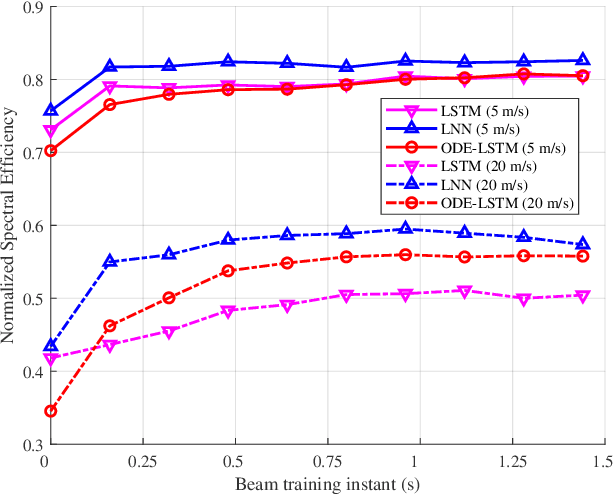
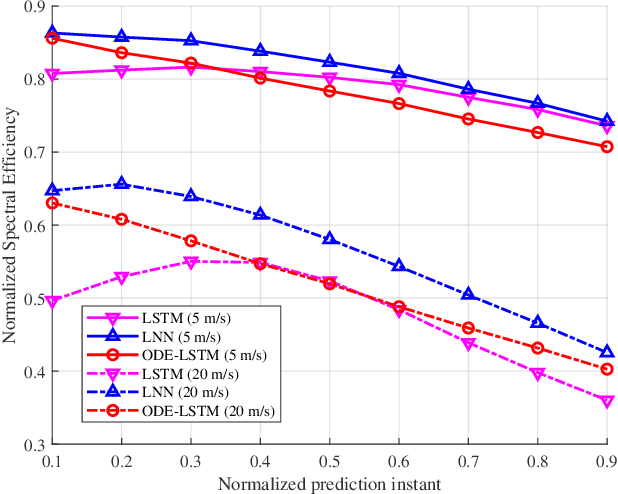
Abstract:Millimeter-wave (mmWave) technology is increasingly recognized as a pivotal technology of the sixth-generation communication networks due to the large amounts of available spectrum at high frequencies. However, the huge overhead associated with beam training imposes a significant challenge in mmWave communications, particularly in urban environments with high background noise. To reduce this high overhead, we propose a novel solution for robust continuous-time beam tracking with liquid neural network, which dynamically adjust the narrow mmWave beams to ensure real-time beam alignment with mobile users. Through extensive simulations, we validate the effectiveness of our proposed method and demonstrate its superiority over existing state-of-the-art deep-learning-based approaches. Specifically, our scheme achieves at most 46.9% higher normalized spectral efficiency than the baselines when the user is moving at 5 m/s, demonstrating the potential of liquid neural networks to enhance mmWave mobile communication performance.
 Add to Chrome
Add to Chrome Add to Firefox
Add to Firefox Add to Edge
Add to Edge